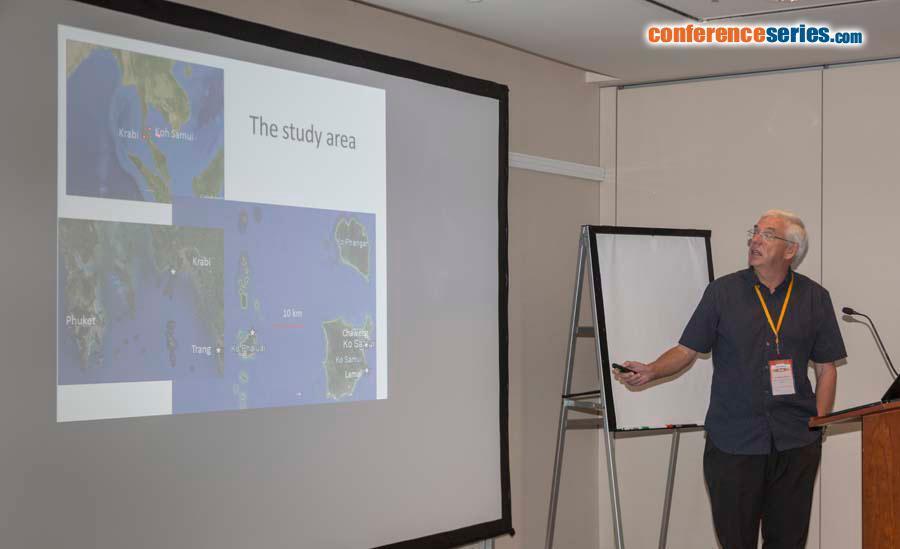
Grahame Oliver
Nanyang Technological University, Singapore
Title: Storm stranded coral boulders and sea level changes around Thailand since the mid-Holocene
Biography
Biography: Grahame Oliver
Abstract
The west coast tourist beaches of peninsular Thailand are vulnerable to tsunamis originating from the Sumatra-Andaman subduction zone. The east coast beaches of peninsular Thailand are thought to be safe from tsunamis. However, our investigations of stranded coral boulders on Koh Samui suggest that east coast tourist beaches are vulnerable to typhoon storm induced inundations. We have estimated the physical processes required to move reef-derived coral boulders on the eastern coast of Koh Samui. Flow velocities of 2.3-8.6 m/s were required to transport the boulders, with individuals deposited up to 4.7 m above mean sea level. U-Th and 14C age-dating of coral boulders, suggest that events capable of the highest flow velocities occurred around AD 1600 and AD 1750. No events of similar magnitude have been experienced in the last 250 years. The non-occurrence of similar events in living memory has implications for hazard perceptions at this important tourist destination. We also presentevidence for Holocene sea-level changes across peninsular Thailand, as observed in raised seanotches in coastal limestone cliffs at KohPhaluai and near Krabi and in emergent fringing reefs at KohSamui. 14C dating of oyster shells and stalactites that grew inside the notches suggest that relative mean sea level was ~2 m higher during the mid-Holocene compared to the present day. Thus, studies using coral boulders as a proxy for past storm-wave conditions must consider the broader sea-level history and are probably best limited to the period post-2000 BP in the Gulf of Thailand.



